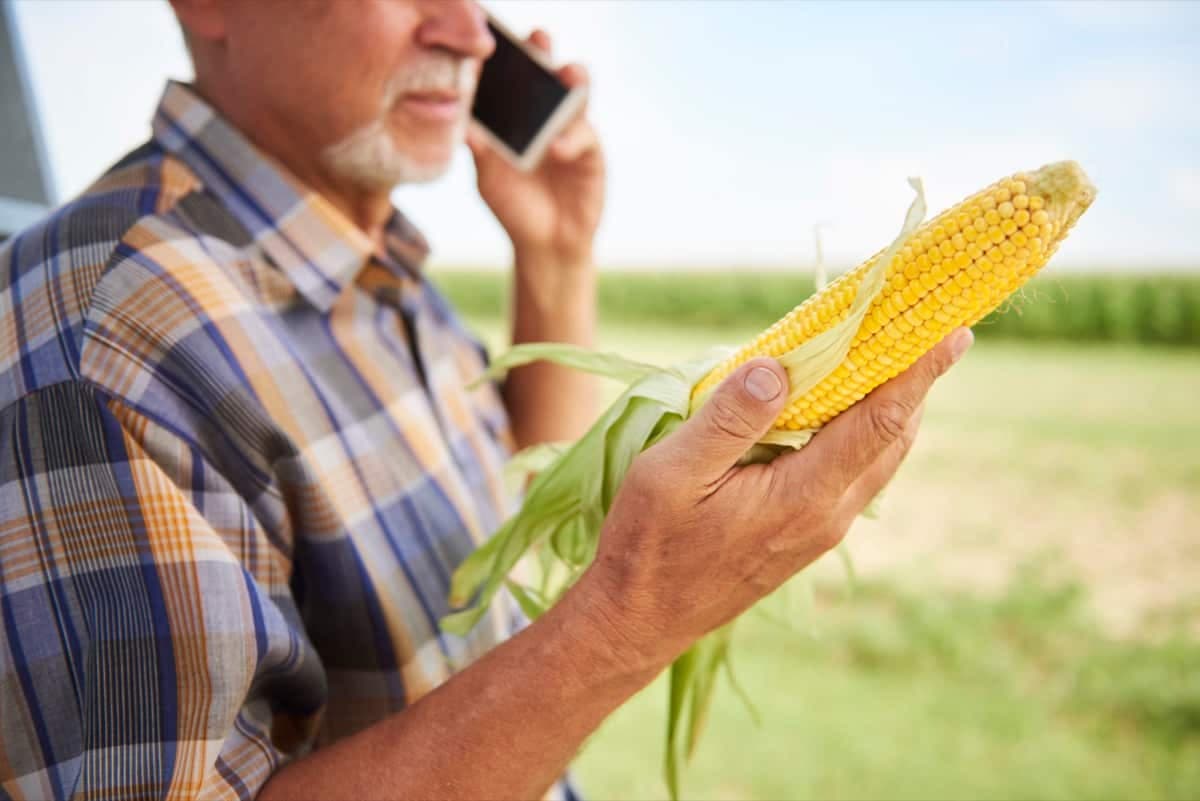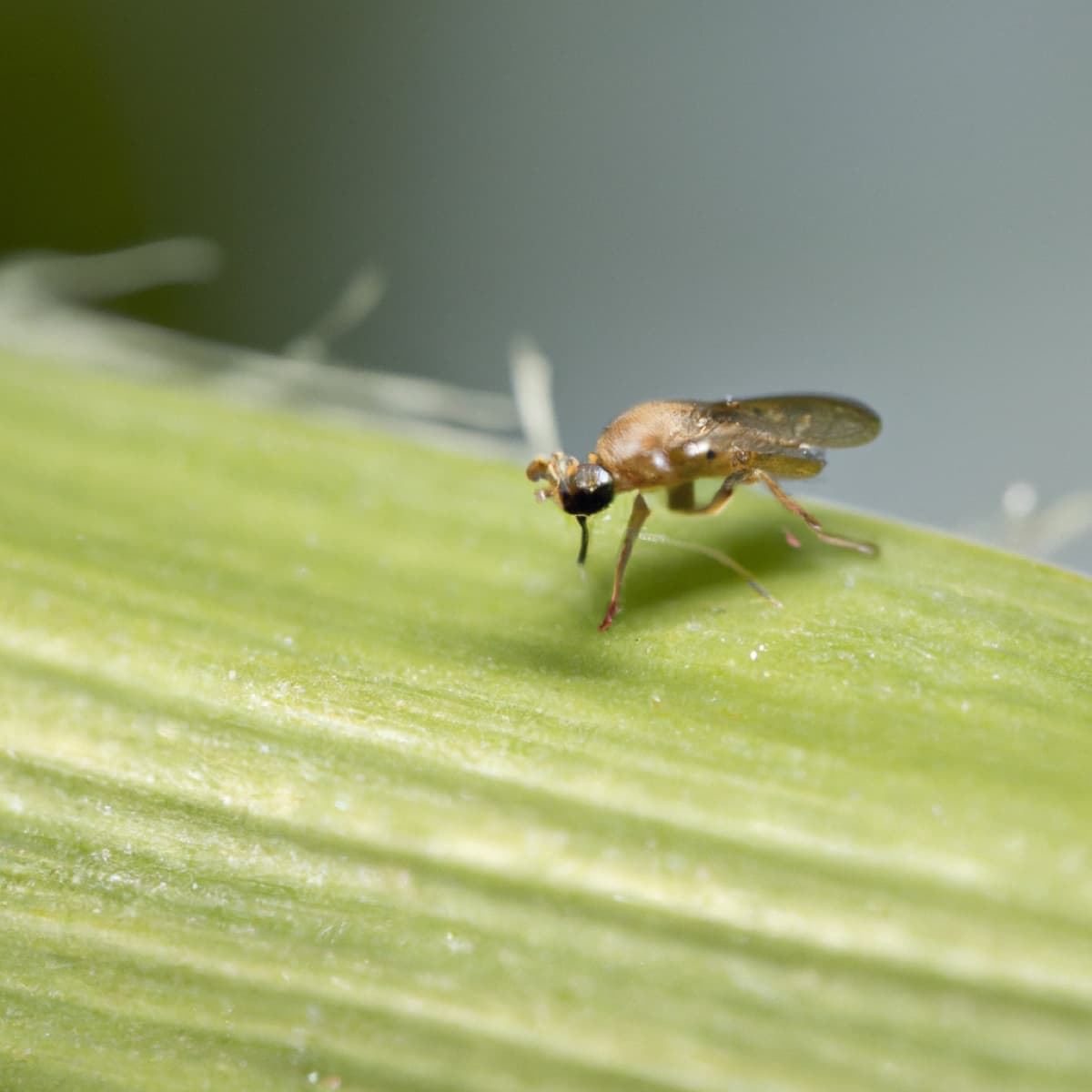The Maize Shootfly, Atherigona orientalis, belonging to the Family Muscidae of the Order Diptera, also known as the Maize Stemfly, is a polyphagous species that it can feed on a wide range of host plants. The larvae can cause holes in the leaves and damage the developing cobs, leading to reduced yields and quality of the maize crop. Maize Shootfly infestations can significantly affect the growth and yield of maize crops and can be difficult to control.

Early detection and control measures are essential for reducing crop losses due to Maize Shootfly infestations. To effectively manage this pest, it is important to understand its life cycle, its preferred habitats, and the best methods for controlling it. This article will provide an overview and discussion of the Maize Shoot-fly Pest in Maize crops, including its symptoms, identification techniques, and control.
Maize Shoot-fly Pest Management
Life Cycle of Maize Shoot-fly Pest in Maize Crop
The life cycle of the maize shoot-fly pest in maize crops is a complex process that takes several weeks. The cycle begins when a female maize shoot-fly lays eggs on a plant’s leaves. These eggs hatch into larvae, feeding on the maize leaves for a few weeks. During this period, the larvae grow and molt several times. When the larvae are fully grown, they drop to the ground and pupate in the soil.
During this pupal stage, the larvae transform from an immature to an adult form. This process can last two to four weeks, depending on the environmental conditions. Once the adult maize shoot-fly emerges from the soil, it will feed on the plants and lay eggs. This cycle repeats itself repeatedly, with the adult shoot-fly laying eggs on the leaves, the larvae hatching and feeding, and the adults emerging from the soil to start the cycle again.
Occurrence of Maize Shoot-fly Pest in Maize Crop
- Location of maize shoot-fly pest: It is particularly prevalent in Africa, India, Bangladesh, Brazil, Ecuador, Mexico, and Peru. In India, it occurs in Uttar Pradesh, Andhra Pradesh, Tamil Nadu, Maharashtra, and Karnataka.
- Host range: The maize shoot-fly pest can infect different crops, including maize, sorghum, wheat, ragi, and bajra.
Factors Favoring the Population Increase of Maize Shoot-fly Pest in Maize Crop
- Climate change – Climate change has caused an increase in the temperature of the environment, which has allowed the shoot-fly pest to survive in areas it could have not come before. This has allowed the pest to spread to new areas and increase its population.
- Increased use of fertilizers – The increased use of fertilizers has increased soil nutrient content. This has allowed the shoot-fly pest to thrive and increase its population.
- Monoculture – The increased practice of monoculture has provided the shoot-fly pest with an uninterrupted food source, allowing it to increase its population.
- Lack of natural enemies – The lack of natural enemies for the shoot-fly pest has allowed it to increase its population without any natural hindrance.
- Increased use of pesticides – This has adversely affected the population of beneficial insects, which act as natural enemies of the shoot-fly pest. This has allowed the shoot-fly pest to increase its population.
Identification of Maize Shoot-fly Pest in Maize Crop
- Egg: The eggs are laid singly and are whitish. They are about 0.4 mm in size and can be difficult to spot in the field.
- Larva: They are yellowish and about 8 mm in size at maturity. They are easily visible and are the most destructive stage of the shoot-fly.
- Pupa: The larvae pupate in the soil, usually at a depth of about 10-15 cm. They are brown and about 6 mm in size.
- Adult: They are small, greyish-brown flies with a wingspan of about 5-7 mm. They are attracted to light and can be seen flying around maize fields.
Damage Symptoms of Maize Shoot-fly Pest in Maize Crop
- “The primary symptom of infestation of shoot fly pests is the maggot (larva) bore into the young and growing central shoot of the plant resulting in the “dead hearts” symptom.”The primary symptom of infestation of shoot fly pests is the maggot (larva) bore into the young and growing central shoot of the plant resulting in the “dead hearts” symptom.
- Adult shoot flies lays their eggs on the abaxial surface of the basal leaves, shoots, and in soil nearer to the base of the plant.
- Dead tillers are a common symptom of maize shoot-fly infestation. The larvae feed on the stems and tillers of the maize plants, killing them in the process.
- Brown spots on the leaves are another symptom of maize shoot-fly infestation. The larvae feed on the underside of the leaves, causing them to develop brown spots.
- Silvering occurs when the pest’s larvae feed on the leaf’s underside, causing them to turn silver in color.
In case you missed it: Maize Stem Borer Pest Management: Symptoms, Treatment, Chemical, Biological, Natural, and Organic Control

Percentage of Yield Loss in Maize due to Maize Shoot-fly Pest
The maize shoot-fly pest is one of the most devastating maize pests and is often known to cause yield losses of up to 50% in some countries. If the infestation occurs at the early stages, the losses may be as high as 30-40%, whereas, at later stages, the losses may be as low as 5-10%.
- In the US, the average yield loss due to this pest can range from 5-20%. The losses may be as high as 50-60% in India. In some African countries, the yield losses can be as high as 80-90%.
- In Brazil, the average yield loss due to the maize shoot-fly pest is estimated to be between 10 and 15%. In China, the average yield loss due to the maize shoot-fly pest is estimated to be between 8 and 10%.
Cultural Control of Maize Shoot-fly Pest in Maize Crop
- Crop rotation involves alternating the maize crop with other non-host crops such as sorghum, millet, and cowpea.
- Resistant varieties – Employ the use of resistant maize cultivars like DMR 5, NCD, and VC 80.
- Intercropping – Sorghum, millets, and legumes, such as pigeon peas, can be planted alongside maize, providing soil nitrogen and increasing the availability of food sources for the pest. This can help reduce the number of adults and larvae in the field.
- Tillage – Tillage can help expose larvae and pupae, reducing the population. In addition, this also helps to improve soil structure and fertility, which can reduce shoot-fly infestations.
- Traps – Setup the fish meal trap of at least 12-15/ha until the crop reaches the age of 1 month.
Biological Control of Maize Shoot-fly Pest in Maize Crop
- Parasitoid wasp – Trichogramma spp., they lay their eggs within the eggs of the shoot-fly. When the eggs hatch, the wasp larvae feed on the shoot-fly larvae, killing them.
- Predatory bug Geocoris spp; these bugs feed on the shoot-flies, reducing the population.
- The fungus Metarhizium anisopliae infects and kills the shoot-fly larvae and the predatory mite Phytoseiulus persimilis, which feeds on the shoot-fly eggs.
- Other Predators like coccinellids, spiders, robber flies, pentatomid bugs, and earwigs can also help control the pest.
Chemical Control of Maize Shoot-fly Pest in Maize Crop
- Seed treatment – Treat the seeds with imidacloprid 70 WS @ 10 g or imidacloprid 600 FS @ 6ml or Thiamethoxam 30 FS @ 8ml per kg seed.
- Insecticides – Soil application in the furrows with any of these insecticides, phorate granules 10%CG 10 kg/ha or lindane 6%CG 25 kg/ha, Methyl demeton 25 EC 0.5L/ha, Carbofuran 3%CG 33 kg/ha, Dimethoate 30%EC 1.15L/ha, Methyl demeton 25% EC 1L/ha at the time of sowing.
Preventive Measures for Control of Maize Shoot-fly Pest in Maize Crop
- Plowing involves deep-turning the soil with a plow and removing and destroying the stubbles. It disrupts the larvae and pupae of the shoot-fly and can reduce their numbers significantly.
- Planting maize should be done by February as early crops are less susceptible to shoot-fly attacks.
- Chemical insecticides like endosulfan and monocrotophos can be used in severe infestation of shoot flies.
- Bio-pesticides like neem, garlic, and tobacco extract can also control shoot flies.
In case you missed it: Charcoal Rot Disease Management in Maize: Symptoms, Treatment, Chemical, Biological, Natural, and Organic Control

Conclusion
The maize shootfly pest is a major pest of maize crops worldwide, causing significant yield losses and economic damage. Control of this pest is difficult, as it is highly mobile and resistant to traditional insecticides. Overall, the maize shootfly is a major pest of maize crops, and an integrated pest management program is needed to reduce its impact.
- Beneficial Insects in Pest Management
- Natural Solutions for Pest Control in Flower Gardens
- Types of Fungicides Used in Agriculture
- Common Issues in the Fruit Development Stage of Pomegranate Farming
- Fruit Development Issues in Papaya: Easy Solutions and Treatment
- Soil-Borne Diseases and How to Protect Your Plants
- Practices to Prevent Disease Spread in the Garden
- From Wilted to Thriving: How to Treat Root Rot Naturally in Houseplants
- Natural Remedies to Cure Brown Spots on Fig Tree Leaves